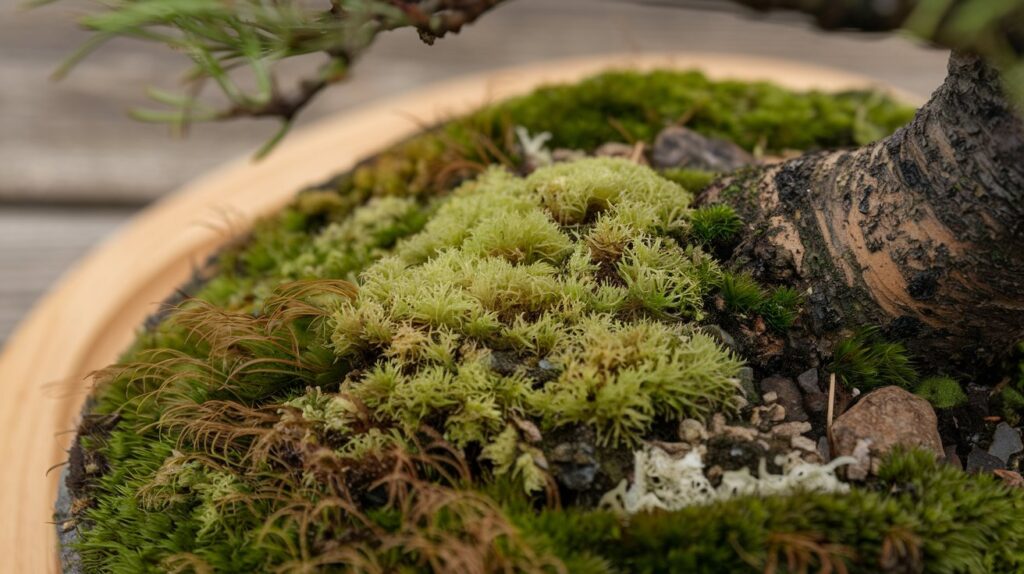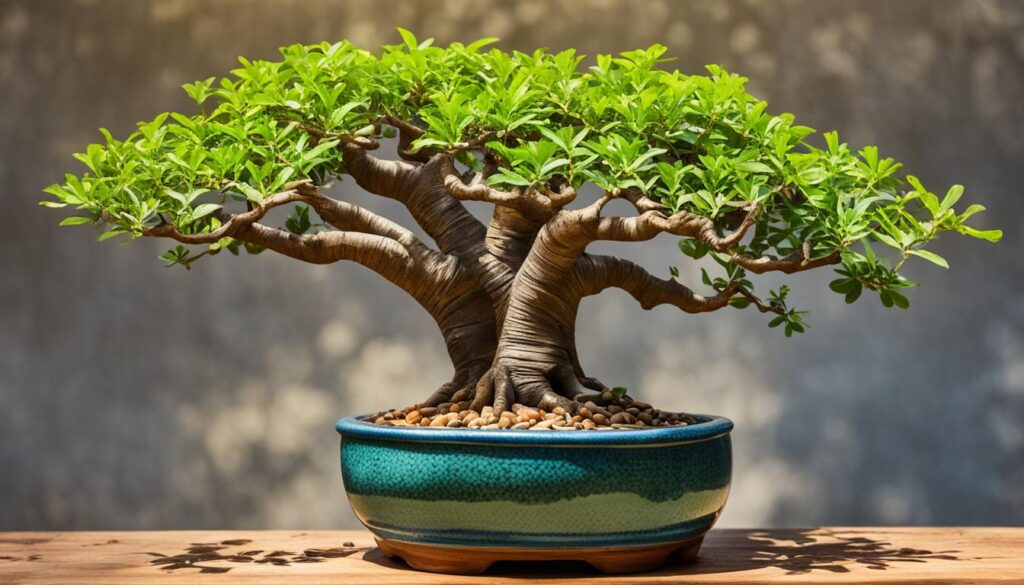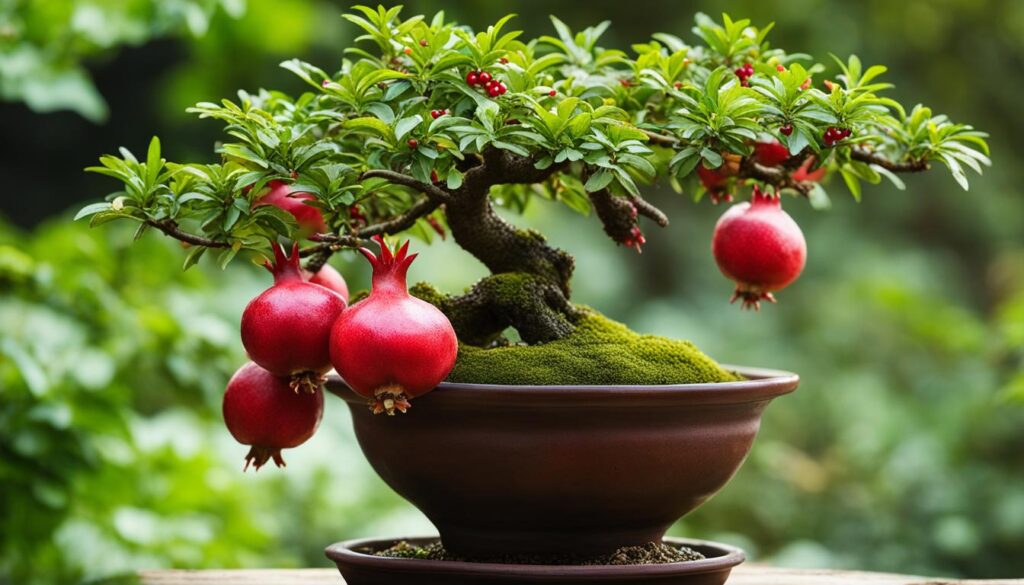Bonsai Tree Moss is more than just an ornamental addition to bonsai trees; it plays a crucial role in enhancing both the aesthetic and functional aspects of bonsai cultivation. From providing a lush, green carpet that accentuates the miniature landscape to retaining moisture and protecting the delicate roots, moss is an indispensable element for bonsai enthusiasts.
This guide explores the best types of moss for bonsai, how to cultivate and care for it, and practical tips for integrating moss into your bonsai setup to create a thriving, visually stunning display.
Key Takeaways
ToggleMoss Types and Species for Bonsai Trees
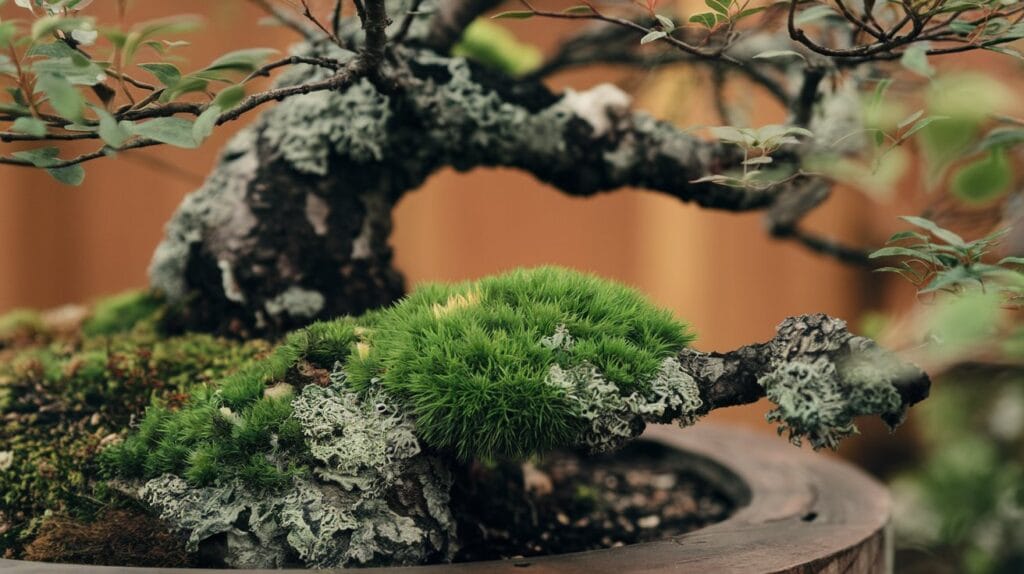
When selecting bonasi tree moss, consider both aesthetic and functional aspects. Notable moss types suitable for bonsai include:
- Hypnum Moss: Soft, velvety texture that grows in dense mats. Retains moisture effectively.
- Cushion Moss (Leucobryum glaucum): Forms rounded clumps, thrives in shade, and contrasts with tree bark and foliage.
- Fern Moss (Thuidium delicatulum): Features delicate, feathery fronds. Adapts to varying light conditions.
- Sphagnum Moss: Excellent water retention and antimicrobial properties. Used as top dressing to maintain soil moisture and prevent erosion.
- Bryum Moss: Resilient and thrives in alkaline soils. Tolerates dryer conditions.
The best moss for bonsai is often locally sourced, as it’s more likely to thrive in the specific environmental conditions. Consider Hypnum, Cushion, Fern, Sphagnum, and Bryum mosses based on your bonsai’s needs and local environment.
Must Read: Top 10 Fastest Growing Bonsai Trees
How to Grow Moss for Bonsai Trees
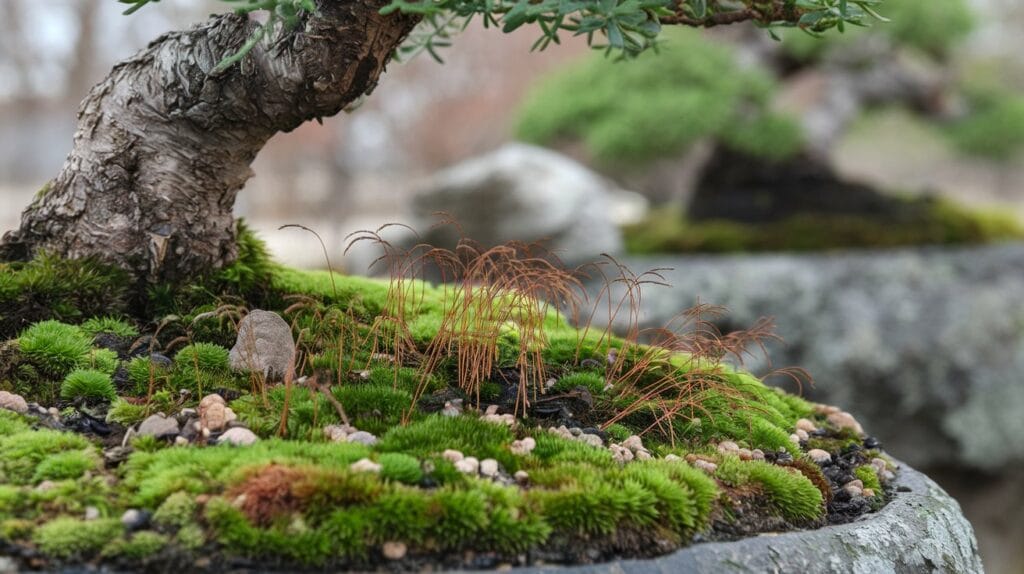
Growing bonsai tree moss can be fascinating. Here’s a step-by-step guide to successfully cultivate moss:
- Materials Needed :
- Moss (either collected or purchased)
- Potting soil or a nutrient-rich soil mix
- Spray bottle for misting
- Tweezers (optional, for placement)
- Shallow trays (if cultivating separately)
- Ideal Conditions :
- Light : Moss thrives in indirect sunlight or dappled shade. Avoid direct sunlight, which can dry out the moss.
- Humidity : Maintain high humidity levels, especially indoors. Consider using a humidity tray or misting regularly.
- Temperature : Moss prefers cooler temperatures, typically between 60°F and 75°F (15°C to 24°C).
- Growing Process :
- Transplanting : The easiest method to establish moss is to transplant it from another location. Use a putty knife to carefully collect patches of moss, ensuring you include some soil.
- Preparation : If using collected moss, keep it moist during transportation. Once home, place it on the surface of your bonsai soil, ensuring good contact.
- Top Dressing :, you can prepare a mixture of dried sphagnum moss and green moss (1:1 ratio). Grind the moss into small pieces and sprinkle it over the bonsai soil. Mist the surface to help it adhere.
- Watering : After applying the moss, water the bonsai thoroughly and mist daily for the first two weeks to encourage establishment.
Collecting Moss for Bonsai
Collecting moss naturally can be a sustainable way to acquire this essential component for bonsai. Here are some tips on how and where to collect moss:
- Ideal Locations :
- Look for moss in shaded, moist areas such as forest floors, the north side of trees, or even in urban settings like sidewalks and rooftops.
- Ensure that the moss you collect is not growing aggressively, as you want it to complement rather than compete with your bonsai.
- Collection Techniques :
- Use a putty knife or a similar tool to gently lift patches of moss. Aim for larger sections to minimize damage and ensure a better chance of survival.
- Collect moss early in the morning or after rain when it is moist, making it easier to handle and transplant.
- Transportation :
- Keep the collected moss in a plastic bag or container, ensuring it remains moist during transport to avoid drying out.
Moss Cultivation Techniques
Cultivating moss at home can provide a steady supply for your bonsai. Here are some effective techniques:
- Soil Preparation :
- Use a shallow container with drainage holes and fill it with a layer of sand or a lightweight potting mix. Mist the soil until damp.
- Moss Application :
- Sprinkle crumbled moss evenly over the prepared soil. Mist the surface to ensure the moss adheres well.
- Place the container in a shaded area and mist daily to keep the moss moist. Within a few weeks, you should see healthy moss growth.
- Alternative Method :
- Create a “moss shake” by blending collected moss with water, buttermilk, or beer to form a slurry. Spread this mixture over bricks or trays to grow moss. Mist daily to encourage establishment.
- Care and Maintenance :
- Monitor moisture levels regularly, ensuring the moss does not dry out. Adjust misting frequency based on environmental conditions.
Must Read: Chinese Elm Bonsai (Ulmus parvifolia) Care Guide
Transplanting Moss to Bonsai
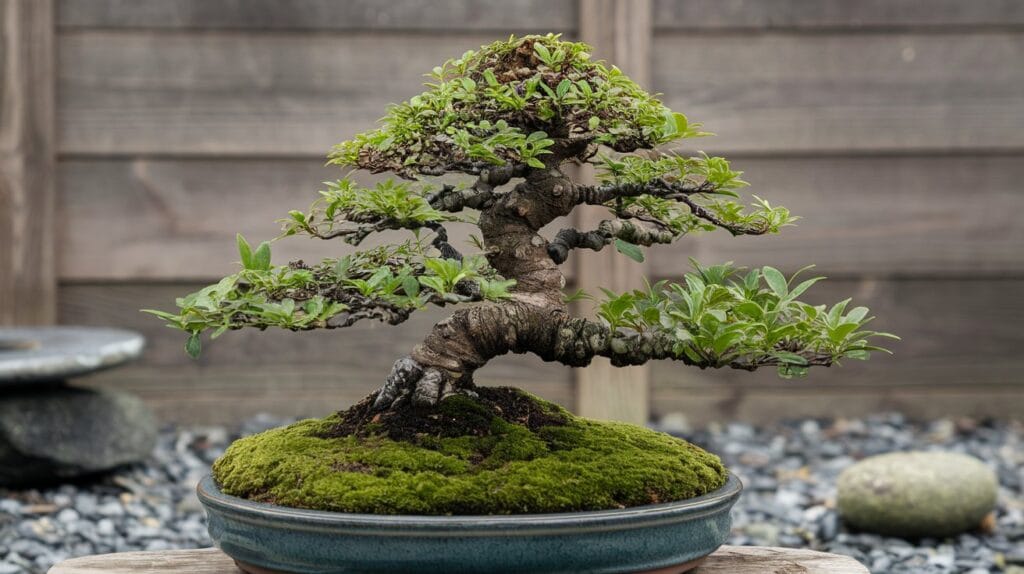
Materials Needed:
1. Moss (collected or purchased)
2. Potting soil or nutrient-rich soil mix
3. Spray bottle
4. Tweezers (optional)
5. Shallow trays (for separate cultivation)
Collecting Moss:
1. Find moss in shaded, moist areas.
2. Use a putty knife to gently lift patches.
3. Collect when moist for easier handling.
4. Keep moss moist during transport.
Ideal Conditions:
1. Light: Indirect sunlight or dappled shade
2. Humidity: High, use humidity tray or mist regularly
3. Temperature: 60°F to 75°F (15°C to 24°C)
Growing Process:
1. Transplant moss using a putty knife, ensuring some soil is included.
2. Place moss on bonsai soil, ensuring good contact.
3. For top dressing, mix dried sphagnum and green moss (1:1), grind, and sprinkle over soil.
4. Water thoroughly and mist daily for two weeks
Moss Cultivation:
1. Prepare shallow container with sand or lightweight potting mix.
2. Sprinkle crumbled moss over damp soil.
3. Place in shade and mist daily.
4. Alternative: Create a “moss shake” with moss, water, and buttermilk or beer.
Must Read: Japanese Maple Bonsai Growing and Care Guide
Moss Care for Bonsai Trees
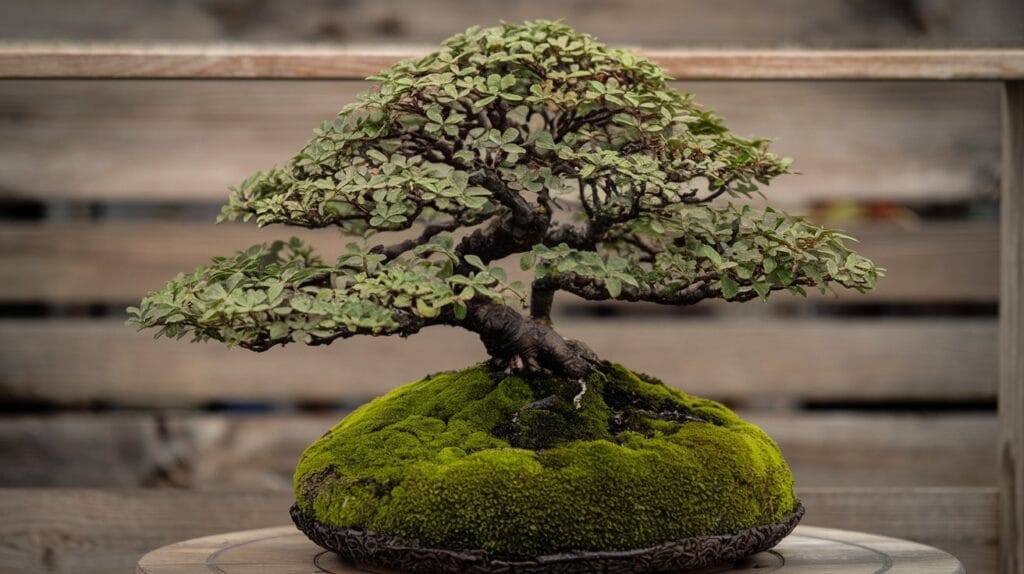
Here’s a concise guide to maintaining healthy moss on bonsai trees:
Watering:
1. Mist daily or every other day, depending on environment
2. Keep soil damp but not waterlogged
3. Avoid overwatering to prevent mold or rot
Light Requirements:
1. Provide indirect sunlight or dappled shade
2. Use shade cloth if necessary
3. Monitor for signs of stress (discoloration, wilting)
Temperature and Humidity:
1. Maintain temperature between 60°F and 75°F (15°C to 24°C)
2. Use humidity tray or humidifier indoors
Routine Maintenance:
1. Trim overgrowth and remove dead patches
2. Clear debris to prevent mold
3. Monitor health and adjust care as needed
4. Remove invasive species or weeds
Fertilization:
1. Apply diluted liquid fertilizer sparingly (quarter strength)
Seasonal Care:
1. Reduce watering in winter
2. Resume regular care in spring
Must Read: Pomegranate Bonsai Growing and Care Guide
Enhancing Bonsai Aesthetics with Moss
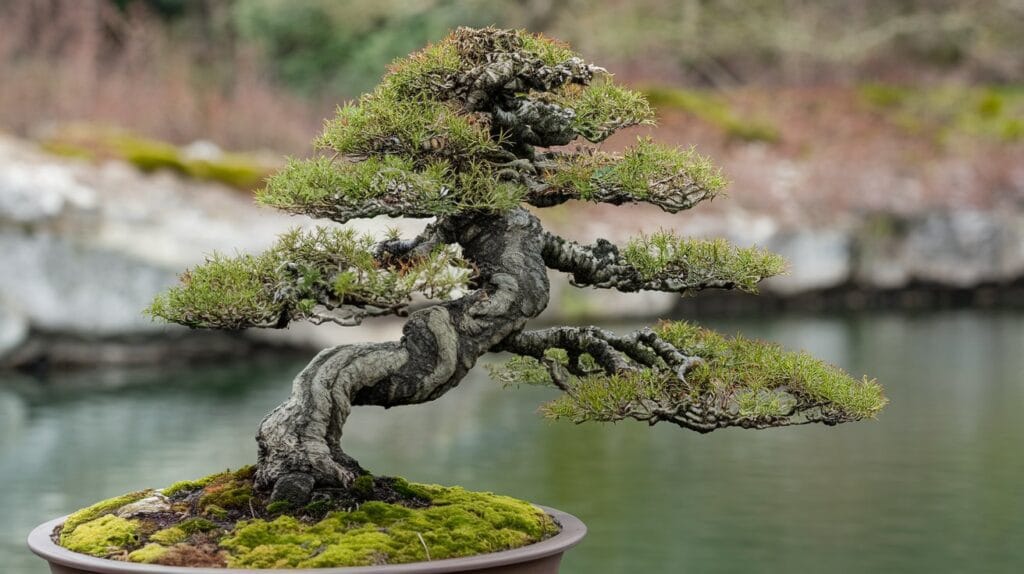
Moss significantly enhances the aesthetics of bonsai trees by creating a lush, green contrast against the textured bark and delicate foliage, giving the impression of a miniature landscape.
Here’s how moss contributes to bonsai aesthetics:
Natural Appearance: Moss mimics grass growing under a tree, creating a more authentic, naturalistic scene. In root-over-rock bonsai, moss growing on the rocks enhances the illusion of age and stability.
Color and Texture: The vibrant green of moss adds depth to the bonsai display, while its soft texture contrasts with the hard surfaces of the pot and rough bark, enriching the viewer’s experience.
Visual Balance: Moss unifies the bonsai arrangement by balancing the overall composition and drawing attention to the focal point.
Miniature Ecosystem: Moss supports beneficial microorganisms, contributing to the bonsai’s health while enhancing its visual appeal.
Moss and Ferns for Bonsai
Combining moss with ferns elevates bonsai aesthetics by creating a richer, more dynamic landscape:
Layered Textures: Ferns’ delicate fronds complement the dense texture of moss, adding complexity to the display.
Natural Habitat Simulation: Moss and ferns simulate a forest floor, enhancing the bonsai’s naturalistic feel and evoking tranquility.
Color Contrast: The varied greens of ferns contrast beautifully with the darker moss, creating a vibrant scene.
Microclimate Creation: Moss and ferns together retain moisture and provide shade, supporting both plants and enriching the bonsai’s environment.
Common Questions about Bonsai Moss
How to Water Bonsai Tree with Moss
Watering a bonsai tree that has moss covering the soil requires careful attention to prevent both overwatering and underwatering. Here are the best practices to maintain both the tree and the moss:
- Monitor Soil Moisture : Moss retains moisture, which means the soil underneath may remain damp even when the moss appears dry. To avoid overwatering, use a chopstick or similar tool to check the moisture level deeper in the pot. If the chopstick comes out damp, the tree likely does not need additional water.
- Misting : If the moss appears dry but the soil is still moist, simply spritz the moss with water using a spray bottle. This method keeps the moss hydrated without saturating the soil excessively.
- Watering Technique : When watering, do so gently to avoid displacing the moss. It’s best to water the bonsai from the bottom or use a watering can with a fine spout to ensure even distribution without disturbing the moss layer.
- Frequency : Adjust your watering schedule based on environmental conditions. In warmer or drier climates, the moss may dry out more quickly, requiring more frequent misting.
How to Grow Moss on Bonsai Tree
Encouraging moss growth on a bonsai tree can be achieved through several methods. Here are specifics on how to successfully grow moss:
- Transplanting Moss : The easiest way to establish moss is by transplanting it from another tree or location. Ensure the moss is healthy and free from pests before transferring it to your bonsai.
- Moss Spores : If transplanting isn’t an option, you can grow moss from spores. Scatter moss spores onto a thin layer of soil in the bonsai pot and keep the soil consistently moist to encourage germination.
- Moss Paste Method : Blend live or dead moss with a small amount of milk to create a paste. Spread this paste over the surface of the bonsai soil. This method can help establish moss more quickly, as the milk provides nutrients.
- Moisture Management : After applying moss or spores, keep the soil damp but not soggy. Regular misting is essential to promote growth. Ensure that the bonsai is kept in a shaded area to prevent excessive drying from sunlight.
Can I Attach Moss Balls to My Bonsai Tree?
Attaching moss balls to a bonsai tree is indeed possible and can enhance the aesthetic appeal. Here’s how to do it:
- Creating Moss Balls : To make moss balls, gather moss and compact it into small, round shapes. You can use a mixture of moss and a binding agent like sphagnum moss or soil to help it hold together.
- Attachment Method : Gently press the moss balls onto the surface of the bonsai soil or directly onto the roots, ensuring they are securely placed. If necessary, use soft twine or fishing line to tie them in place temporarily until they establish.
- Maintenance : Keep the moss balls moist by misting them regularly. This will help them establish a connection with the bonsai and promote healthy growth.
How to Get Moss to Grow on Aquarium Bonsai Tree
Growing Aquarium bonsai tree moss presents unique challenges, but it is achievable with the right approach:
- Water Conditions : Ensure the water in the aquarium is suitable for moss growth. Most moss species thrive in cool, well-oxygenated water with stable parameters (pH, temperature).
- Submerged Moss : Use aquatic moss species like Java moss or Christmas moss, which can thrive underwater. These species can be attached to the bonsai branches or roots using fishing line or thread.
- Light Requirements : Provide adequate lighting for the aquarium. Moss requires light for photosynthesis, so ensure the aquarium has a suitable light source that mimics natural conditions.
- Nutrient Management : In an aquarium setting, consider adding liquid fertilizers specifically designed for aquatic plants to promote healthy moss growth. Regularly monitor water quality to maintain a healthy environment for both the moss and the bonsai.
Conclusion
Incorporating moss into your bonsai practice not only elevates the visual appeal of your miniature landscape but also supports the overall health of your bonsai tree. By carefully selecting, cultivating, and maintaining the right moss species, you can create a harmonious environment that mirrors nature’s beauty while ensuring optimal soil conditions and moisture levels. Whether you’re a seasoned bonsai enthusiast or just starting out, mastering the art of bonsai moss will enhance your tree’s aesthetics and contribute to its longevity and vitality.

